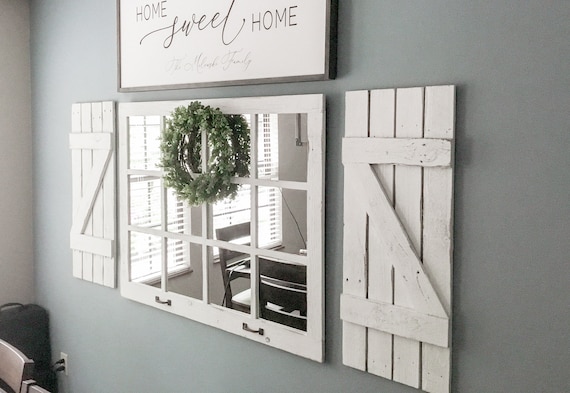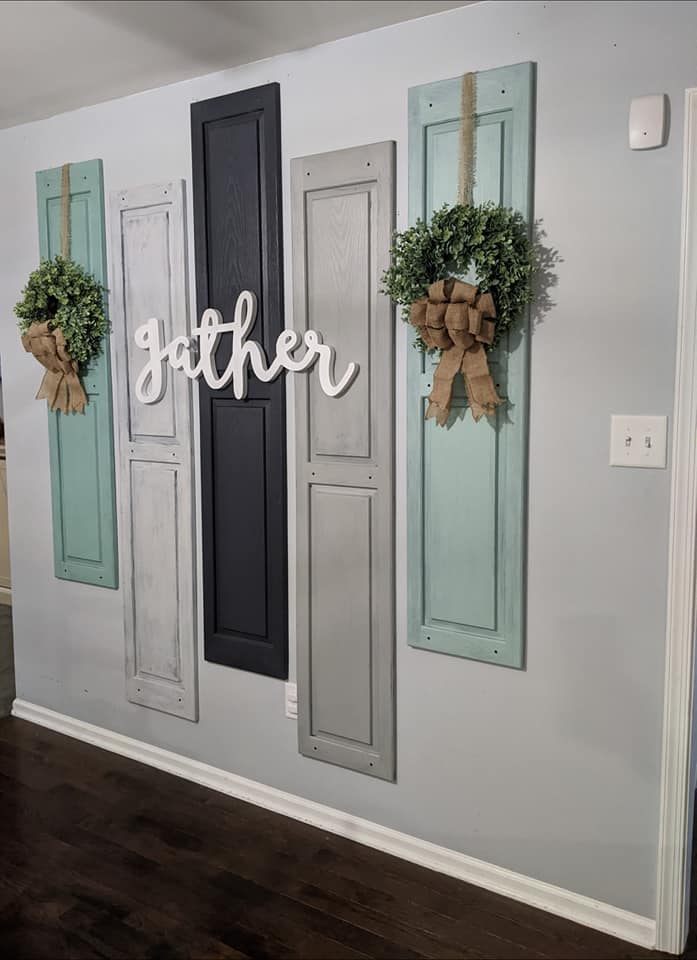Decorative shutters for walls are more than just functional pieces – they are an art form that can completely transform your living or working space. As an interior enthusiast and a long-time homeowner, I’ve had my fair share of experiences with these charming accents. In this guide, I’ll break down everything you need to know about decorative shutters, from styles and materials to installation tips and maintenance. So grab your coffee, relax, and let’s dive into the world of wall shutters!
What Are Decorative Shutters?
Decorative shutters are non-functional pieces of architectural detail typically installed on either side of windows, doors, or even as standalone wall decor. They can be made from various materials, including wood, vinyl, and composite materials, each offering unique aesthetic and functional benefits.
Why Choose Decorative Shutters?
- Style Enhancement: Shutters add depth and character to any space.
- Versatility: Available in various designs to suit different preferences.
- Increase Home Value: Quality fixtures contribute to the overall appeal of your home.
Types of Decorative Shutters
Choosing the right type of decorative shutter can be daunting given the abundance of options. Here’s a breakdown of the most popular styles.
1. Board and Batten Shutters
These shutters are characterized by vertical boards with horizontal battens, giving them a rustic look. They are perfect for farmhouse-style homes.

2. Louvered Shutters
Louvered shutters feature slats that tilt to allow airflow and light control. While primarily functional, they also add elegance and sophistication.
3. Raised Panel Shutters
These are more traditional and feature a panel design. They can complement classic architecture beautifully.

4. Coastal Shutters
Typically made from weather-resistant materials, coastal shutters are designed to withstand harsh weather and are perfect for beach houses.
5. Plantation Shutters
Distinct for their wide slats, plantation shutters provide excellent light control and are known for their elegance and versatility.

Materials Used in Decorative Shutters
Understanding the materials used in decorative shutters is crucial for making an informed decision. Here’s a comparison of the most common materials:
| Material | Pros | Cons |
|---|---|---|
| Wood | Natural beauty, customizable | Can warp or crack over time |
| Vinyl | Durable, low maintenance | Limited color options |
| Composite | Weather-resistant, cost-effective | May not have the same aesthetic appeal as wood |

Benefits of Decorative Shutters
While decorative shutters primarily enhance aesthetics, they also offer several practical benefits:
1. Aesthetic Appeal
Shutters can serve as a focal point or subtle enhancement, depending on your style preferences.

2. Increased Privacy
While they may not function like traditional shutters, decorative options can still provide a sense of privacy.
3. Protection from Weather
They can help shield windows from strong winds or heavy rain, extending the lifespan of your windows.

4. Energy Efficiency
Shutters can help improve insulation, keeping your home warmer in winter and cooler in summer.
How to Choose the Right Decorative Shutters
Choosing the right decorative shutters involves considering several factors, including your home’s architectural style, color schemes, and personal taste.
1. Match Your Home’s Style
Consider designs that complement your home’s architecture. For example, traditional homes pair well with raised panel shutters, while modern designs may benefit from sleek, minimalistic options.
2. Consider Color Schemes
When selecting colors, think about both your exterior and interior palettes. Neutral colors can provide a timeless look, while bold colors can make an eye-catching statement.
3. Personal Style
Your shutters should reflect your personality. Don’t hesitate to opt for quirky designs or custom features that make a statement.
Installation Tips and Tricks
Installing decorative shutters can be a DIY project if you’re handy, but professional installation may be best in some cases. Here’s a step-by-step guide for those who choose the DIY route.
1. Gather Your Tools
- Measuring tape
- Drill
- Screws and anchors
- Level
- Paint or stain (if required)
2. Measure for Accuracy
Measure your windows precisely before purchase. Shutters should be slightly larger than your window frame for a polished look.
3. Pre-Drill Holes
Pre-drill holes in your shutters to prevent splitting and to make installation easier.
4. Level and Secure
Use a level to ensure the shutters are straight, then secure them to the wall using appropriate screws and anchors.
Maintaining Your Decorative Shutters
Once installed, it’s essential to maintain your decorative shutters to keep them looking their best.
1. Regular Cleaning
Dust and grime can accumulate over time. Use a soft cloth and mild soap to wipe them down regularly.
2. Check for Damage
Inspect your shutters periodically for any signs of wear or damage, addressing issues as soon as possible.
3. Repaint or Restain as Necessary
If your shutters are painted or stained, you may need to refresh the finish to maintain their beauty.
Pros and Cons of Decorative Shutters
As with any home improvement element, there are advantages and disadvantages to consider:
Pros
- Enhanced visual appeal
- Versatile design options
- Potential increase in property value
- Some functional benefits even in decorative models
Cons
- Initial installation cost
- Some materials may require more upkeep
- If not chosen wisely, they can clash with home design
FAQs About Decorative Shutters
What are the best materials for decorative shutters?
The best materials depend on your style preferences and budget. Wood, vinyl, and composite materials are the most common options.
Can decorative shutters be used outdoors?
Yes, many decorative shutters are designed for outdoor use, especially those made from weather-resistant materials.
How much do decorative shutters cost?
The cost varies widely based on material, size, and design, typically ranging from $50 to $500 per pair.
Can I install decorative shutters myself?
Yes, installing decorative shutters is a manageable DIY project for many homeowners with basic tools and skills.
How often should I clean my decorative shutters?
It’s a good idea to clean your shutters every few months to keep them looking their best.
Conclusion
Decorative shutters for walls are a fantastic way to enhance your home’s aesthetic appeal while providing some practical benefits. With countless styles, materials, and colors to choose from, there’s something for everyone. Whether you’re looking to make a bold statement or add a subtle touch of charm, decorative shutters can elevate your space. Remember to consider your home’s architecture, your personal style, and maintenance needs when choosing the perfect shutters for your walls!